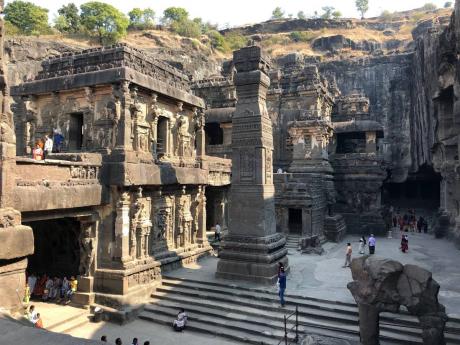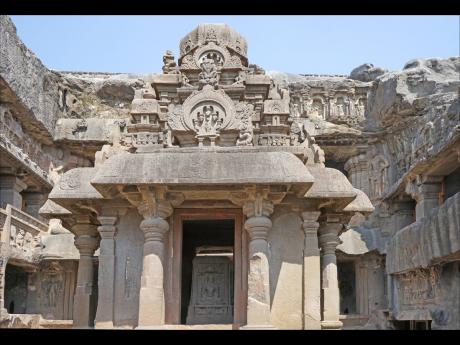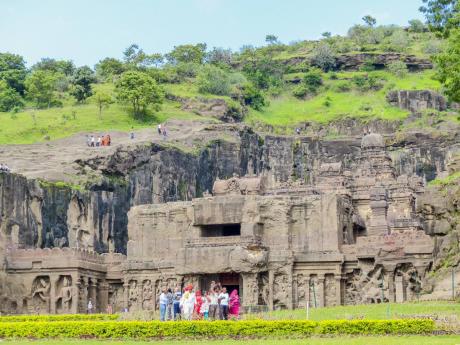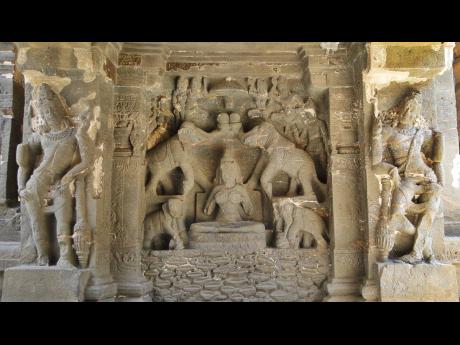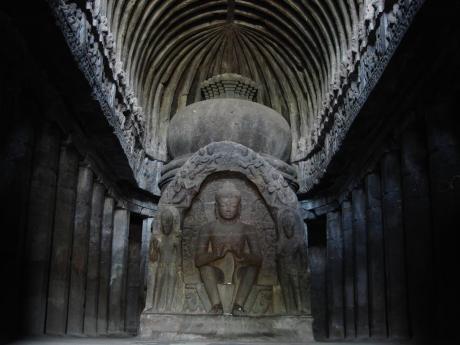Ellora Caves – spirituality carved on the hills
There is something about historical perspectives – they seldom cease to awe or intrigue us. As we talk of perspectives, the monuments across the world, from the pyramids in Egypt, the Great Wall of China, ancient cities of Rome and Athens, the mystique of Petra, are awe inspiring all.
And then there is India, enriched and embedded in a civilization that is more than 4,000 years old, the length and breadth of the country is embedded with jewels of architecture, each with its unique characteristics and each having a story to relate.
Ellora – home to a set of monasteries and temples, extending over more than two kilometres, is a far cry from the urban landscape of the city that never sleeps, India’s financial capital, Mumbai. It is encased in serenity and tells stories of three religions: Buddhism, Jainism, and Hinduism.
Ellora Caves were carved out of massive rocks and mountain faces between 600 and 1100 AD. The site boasts some of the biggest manmade cave structures in the world. These were chiselled out of rugged and formidable rockfaces and are known for their remarkable reliefs, sculpture, and architecture. The Ellora Caves were proclaimed a Heritage Site by UNESCO in 1983.
CREATIVE ENERGIES
“The caves of Ellora are a convergence of ideas and shared creative energies that gave form to this stupendous work of art and technological excellence,” said Prathit Misra, second secretary at the High Commission of India in Jamaica.
Ellora has a total of five Jain, 12 Buddhist, and 17 Hindu caves – each with their elaborate and distinct carvings and statutes. “These sculptures are of deities, and there are carvings portraying the stories and mythology of these religions,” Misra said.
Ellora was in the South Asian trade route, and it was a resting place for the traders and the travelling monks. An architectural marvel, the caves in Ellora give insight into the lives of the people in medieval India. The richness and diversity of the art in these caves is evident to the visitor as the distinct differences in the style and stories become evident.
“The carvings in the Ellora Caves include the socio-cultural set-up, material and non-material culture, economy and politics, as well as a daily lifestyle of that era,” Misra said. The stories that are carved in the rockfaces highlight the spirit of receptiveness in medieval India. This spirit is a prime example of the co-existence of three religious beliefs in harmony. The caves also received patronage from many dynasties that ruled this part of India. Some of the rulers were not followers of any of the three religions, but they honoured and respected the presence of a higher being and kept the sanctity of the caves.
The Kailasa is the largest of the rock-cut Hindu temples. The temple is a megalith carved from a rock cliff face and is often termed “the climax of the rock-cut phase of Indian architecture” because of its extraordinary size, architecture, and sculptural treatment.
It is estimated that around three million cubic feet of stone weighing more than 200,000 tonnes was moved to excavate the Kailasa temple. The temple is also decorated with some of the boldest and finest sculptural compositions in India. The ceilings are adorned with paintings, which are from a different era, but are well preserved to date.
Vishwakarma Cave is one of the most popular of the Buddhist caves. It is so known as the carpenter’s cave, owing to the fact that the ceiling has been carved to look like wooden beams. Inside the cave is an imposing, over 15 feet high statue of the founder of Buddhism, Gautam Buddha, in a preaching pose (seated with his feet down). This cave is believed to be the dedicated prayer house among all the caves.
The Jain caves, on the other hand, unlike the opulence of the other caves, are minimalistic. Among the most popular is Indra Sabha (gathering of Indra), which has two-storeys. The cave is ornate and has a monolithic shrine in its court.
“The Ellora Caves preserve an artistic legacy that belongs not only to India, but to the entire world,” Misra said. “The caves have inspired many generations of artists and creations and will continue to enrich the lives of many more to come.”
The Ellora Caves, in essence, are a reflection of the diversity of India and her evolution over the centuries. These manifestations make the country an abode for those seeking peace and exploring their spirituality, and as Buddha said, peace comes from within. Do not seek it without.
- Background information courtesy High Commission of India in Jamaica. amitabh.sharma@gleanerjm.com | Twitter: @amitabhs


